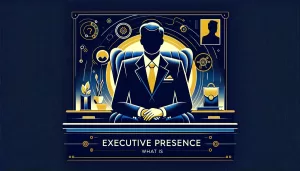The way to create a strong personal brand identity is by understanding what it includes and completing the necessary requirements through workshops and templates.
It may sound easy, but it takes a lot of work.
Thankfully, once you have done it, it will clear your path to become a thought leader in your industry.
Before we start, we must remember a personal brand is the way people perceive you and what they think about you—especially when you are not in the room.
A personal brand will help you become a better professional, gain confidence in yourself and find new opportunities to grow personally and financially.
Some sources and agencies talk about personal brand and personal brand identity as the same thing.
Sometimes, that is totally valid.
However, we see personal brand identity as something more specific than a personal brand.
A personal brand will include your strategies, your social media content, PR, and much more elements.
On the other hand, a personal brand identity tends to be more abridged and particular.
We will further explain its different acceptions.
In this article, you will find:
- Different ways the term “personal brand identity” might be used.
- What does a personal brand identity include.
- How to build one.
- Benefits of having a strong personal branding identity.
You will leave this page motivated and inspired to make the change you need in the world and your industry.
Don’t worry—while you make the decision to hire a personal branding agency, you can start building your brand on your own.
Contents
Personal Brand Identity Acceptions
Before going deeper into detail about personal brand identity and what it consists of, we must clarify the two main ways the term can be used.
Conceptual
The first one—and which we are going to work with—is conceptual.
A personal brand identity from the conceptual point of view refers to the group of ideas, goals, feelings, attributes and, forgive the redundancy, concepts that shape your personal brand.
It is the main idea behind all the strategy and content you will later produce.
By having a strong conceptual personal brand identity, you will be able to make decisions easily, have a better understanding of the path you must walk in and make brand-related content.
Your concept will also help you differentiate from your competition, even if they are from the same industry as yours.
It will be key to connecting with your desired audience and building a community of your own.
Examples of Conceptual Personal Branding Identities
Sophia Amorouso is the author of the best-selling book “#GirlBoss”, and is now dedicated to entrepreneurship and business consultancy.
The concept behind her brand and her writing is related to women, empowerment, making money through our own means and having a better life.
Hey visual identity is very light, with a lot of pink and warm tones, as well as bold typographies.
On the other hand, Nicolas Cole, writer and entrepreneur, founded Digital Press, a company that trains leaders and helps them produce content for their different channels.
The concept behind his brand has to do with personal growth, becoming a writer and a leader and it’s more oriented towards men.
His website uses a lot of black, gray and other cold tones that make contrast with luxurious images. His fonts are sans serif and have a formal feel to them.
These two examples show that two writers, who are also entrepreneurs and work in the field of mentoring and helping other leaders, can have two very different concepts.
Therefore, they also have very different audiences, products and services.
Visual
A visual personal brand identity is different from a conceptual one, but it’s not totally independent.
We could say that the visual identity is derived from a concept.
In very little words, your visual identity it’s made of all the graphic elements that will allow your potential community to identify you and differentiate your content from others.
It usually contains:
- Logo.
- Color Palette.
- Typography.
- Imagery.
When a visual identity is built inspired by a concept, it has more strength and it’s easier to make.
You may read more about personal brand visual identity and its importance in our article about how to make a style guide.
What Does a Personal Brand Identity Include
Now that we have clarified the different ways a personal brand identity might be understood for, we can explain which elements it generally has.
Personal Brand Statement or Value Proposition
Even though a personal brand statement and a value proposition are not the same thing, they have similar purposes when it comes to personal brand identity building.
A personal brand statement is a phrase that communicates who you are, what you do and how you can help people.
A value proposition is the special aspect you, your product and/or your service has that helps you make a difference from your competitors.
When done well, a personal brand statement includes your value proposition.
It’s important you have these two elements present in your process, since they will help you understand your unique traits and the characteristics you should focus on.
You can read more about personal brand statements in our FREE guide.
Visual Identity
We just explained what visual identity is, but we mention it again because it is a very important element of your personal brand.
By having a strong personal brand visual identity you will be able to produce better valuable content and have people notice you more easily.
Plus, when you take your visual identity outside of the Internet—for example, you consider your color palette in the way you dress for a speech—, you look more professional.
Voice
“A brand voice is a way a company or person expresses themselves. It communicates values, mission, and vision through tone, vocabulary, imagery, and other elements.” –Nelson Velásquez
Having a personal brand voice is important for your identity because it will help you be differentiated and have a stronger connection with your audience.
You will be communicating your values and your main characteristics through the way you speak and write, and it will all feel like the same concept.
Through your tone and vocabulary you will be defining who you are and what makes you special.
Niche
The last element in this list is your niche.
According to Merrian-Webster, a niche is “the situation in which a business’s products or services can succeed by being sold to a particular kind or group of people.”
It also is known as a narrow section of your general audience; the most specific and ideal part of it.
For example, Latina Business Coach’s general audience is anyone who needs business consultancy, but her niche audience is latinas business owners in the United States.
By establishing your niche, you will get to know the specific group of people you want to reach and ideas on how to do it.
How To Build A Personal Brand Identity
Now that you know what a personal brand identity consists of, you must learn about how to achieve and build those necessary elements.
There are two main processes: workshops and templates.
Workshops
“Workshops on personal branding offer a set of activities and tools to guide whoever is interested in improving or even starting their processes as a thought leader.” – Nelson Velásquez
Any professional personal brand agency will organize a set of workshops for you when you first start working with them.
These are extremely necessary because it allows you and your team to know you better and have a deeper understanding of what you want to achieve and how you can do it.
These workshops can go from exploring your purpose in life to specifying the skills you want to put to use in your branding and how you think you can exploit them.
At Latinpresarios, we dedicate ourselves to workshops during our discovery process.
Templates
A template is a sort of guidebook with prompts that will help you have a clearer vision of something in particular.
When it comes to personal branding, having a good template is key.
It will force you to ask you new questions you might not have thought of before.
By downloading and filling our personal branding template, you will get to know your:
- Core values.
- Ideal audience.
- Short, medium and long term goals.
- What you want people to think about you.
- And much more!
Another type of template is regarding personal brand statements, which we explained before in this same article.
A basic template you might use is:
I help [target audience] to [a problem that you solve] by [your products or services].
This will help you identify the core of your personal brand.
Read more about personal brand statements examples right here.
Benefits of Building Your Personal Brand Identity
There are many reasons why building a strong personal brand identity will make you a better professional.
In general, personal branding is important because it opens doors to new opportunities, builds confidence and creates deeper connections.
However, working on your personal brand identity has its specific benefits.
- Clarity to build deliverables: the more you know your identity and what you want to achieve, the more uncomplicated it will be to conceptualize your website, selling products and services, social media content, events, and many other elements.
- Easier recognition: when your identity shows through visual elements and its consistency, it will become easier for people to recognize you. This applies to social media, other digital platforms and in-person encounters.
- Self awareness: understanding your personal brand identity means to understand your own, too. They are intrinsically related.
- More definition to your goals: you must specify your different goals in order to better shape your identity and the actions that come with it.
Start Your Personal Brand Identity
It’s not very complicated and it brings a lot of benefits!
Through this article, we explained:
- The differences between a conceptual and a visual identity.
- The role a personal brand statement, graphic elements, voice and niche has in your personal brand.
- Why you should engage in workshops and fill out templates.
- And the benefits of making your personal brand identity.
You might start doing some of the work and introspection yourself, but we recommend seeking professional support to maximize your efforts.
You can directly contact our team by booking a free consultancy call with us and learn more about leveraging your brand and career.





